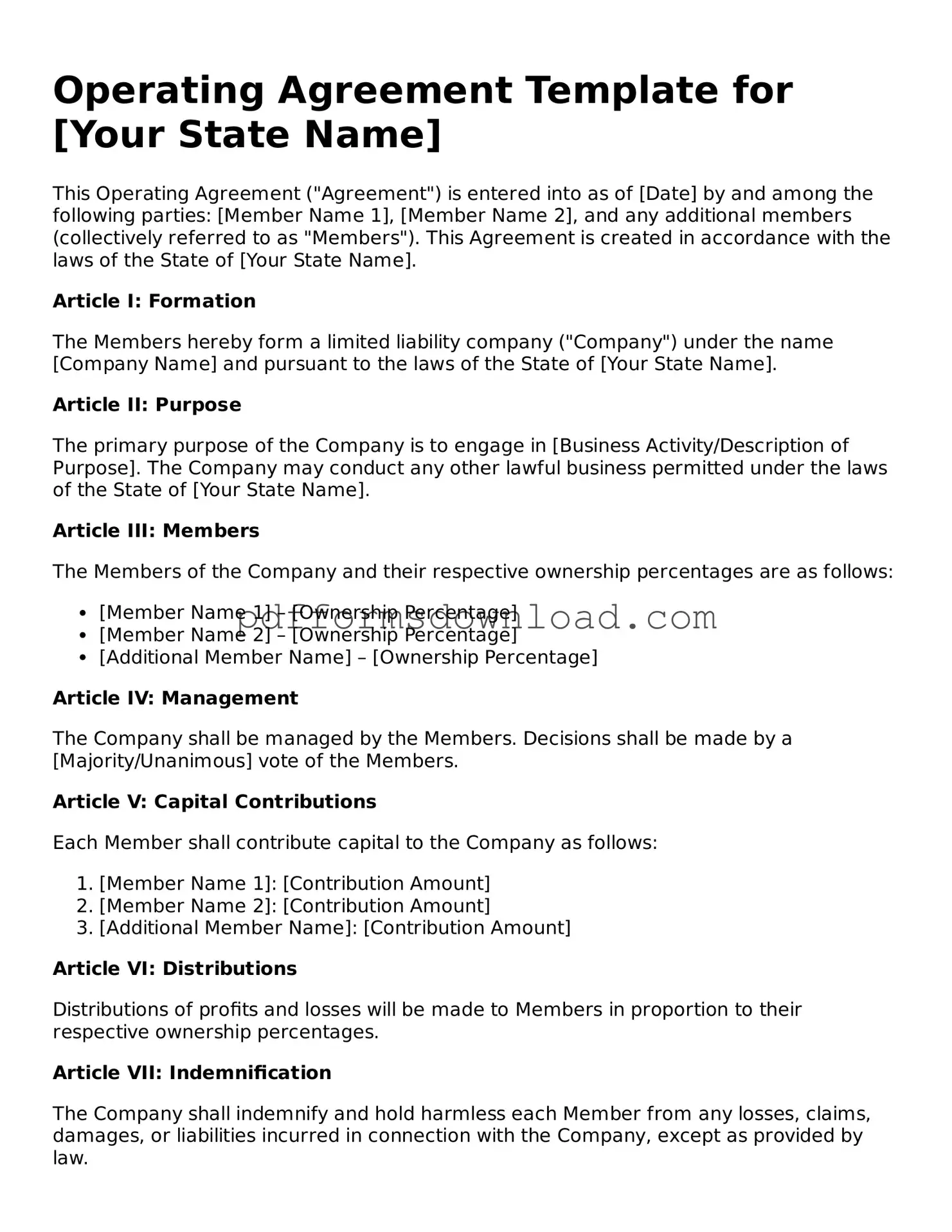What is an Operating Agreement?
An Operating Agreement is a key document for a Limited Liability Company (LLC). It outlines the ownership structure, management responsibilities, and operational procedures of the business. This agreement helps define the roles of members and managers, ensuring everyone understands their rights and obligations. It can also address how profits and losses are shared among members.
Why do I need an Operating Agreement?
Having an Operating Agreement is crucial for several reasons. First, it helps protect your limited liability status by demonstrating that your LLC is a separate entity. Second, it provides clarity on decision-making processes and dispute resolution. Without this document, state laws will govern your LLC, which may not align with your intentions. An Operating Agreement ensures that your business runs smoothly and according to your specific terms.
Can I create my own Operating Agreement?
Yes, you can create your own Operating Agreement. Many templates are available online, and you can customize them to fit your needs. However, it’s essential to ensure that the agreement complies with your state’s laws and accurately reflects your business's structure. If you're unsure, consulting a legal professional can provide peace of mind and ensure that your document is thorough and effective.
What should be included in an Operating Agreement?
An Operating Agreement should include several key components. These typically encompass the LLC's name, purpose, duration, and address. It should detail member contributions, ownership percentages, and how profits and losses will be distributed. Additionally, outline the management structure, voting rights, and procedures for adding or removing members. Including a section on dispute resolution can also be beneficial for preventing conflicts.
Is an Operating Agreement required by law?
While not all states require an Operating Agreement, it is highly recommended. Some states may mandate it for certain types of LLCs. Even if your state does not require one, having an Operating Agreement can provide significant benefits, such as protecting your limited liability status and clarifying internal processes. It's a wise investment in your business's future.
How often should I update my Operating Agreement?
You should review and update your Operating Agreement regularly, especially when significant changes occur in your business. This could include adding new members, altering ownership percentages, or changing management structures. Regular updates ensure that the agreement remains relevant and reflects the current state of your LLC. It's a good practice to revisit the document at least annually.
What happens if I don't have an Operating Agreement?
If you do not have an Operating Agreement, your LLC will be governed by state default rules. These rules may not align with your business goals and can lead to misunderstandings among members. Additionally, lacking an Operating Agreement can jeopardize your limited liability protection, exposing personal assets to business liabilities. It’s advisable to create one to safeguard your interests and clarify your business operations.
